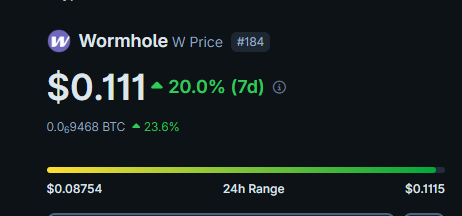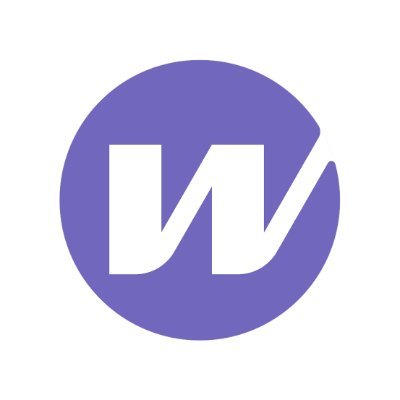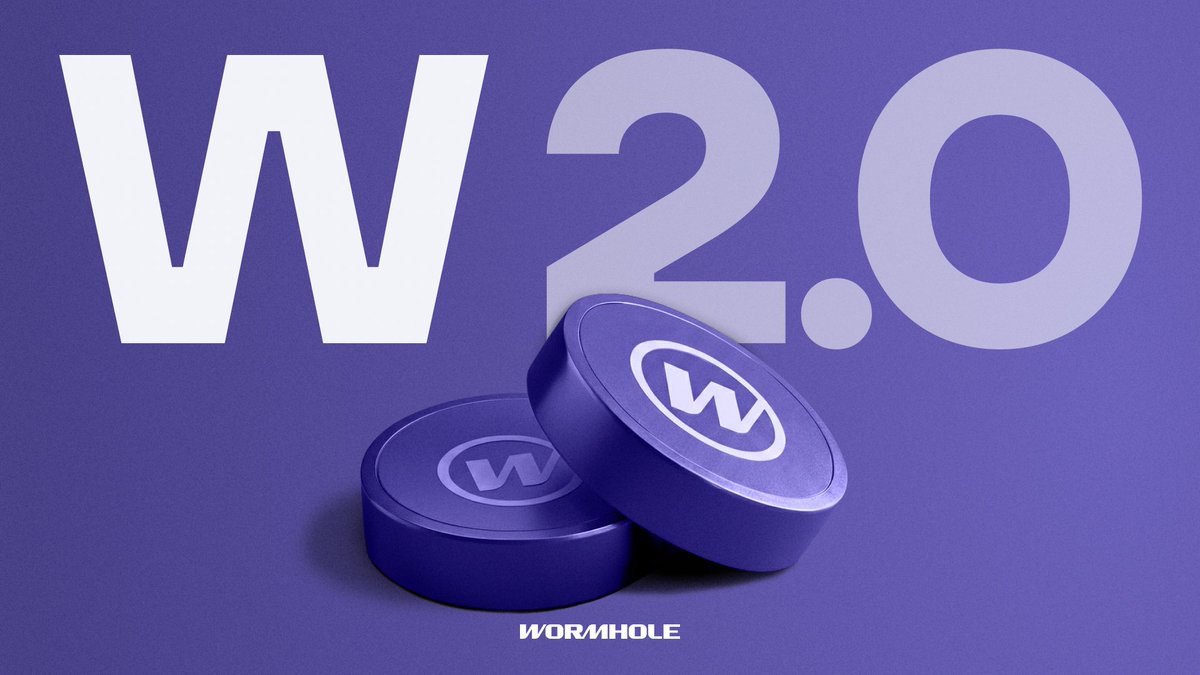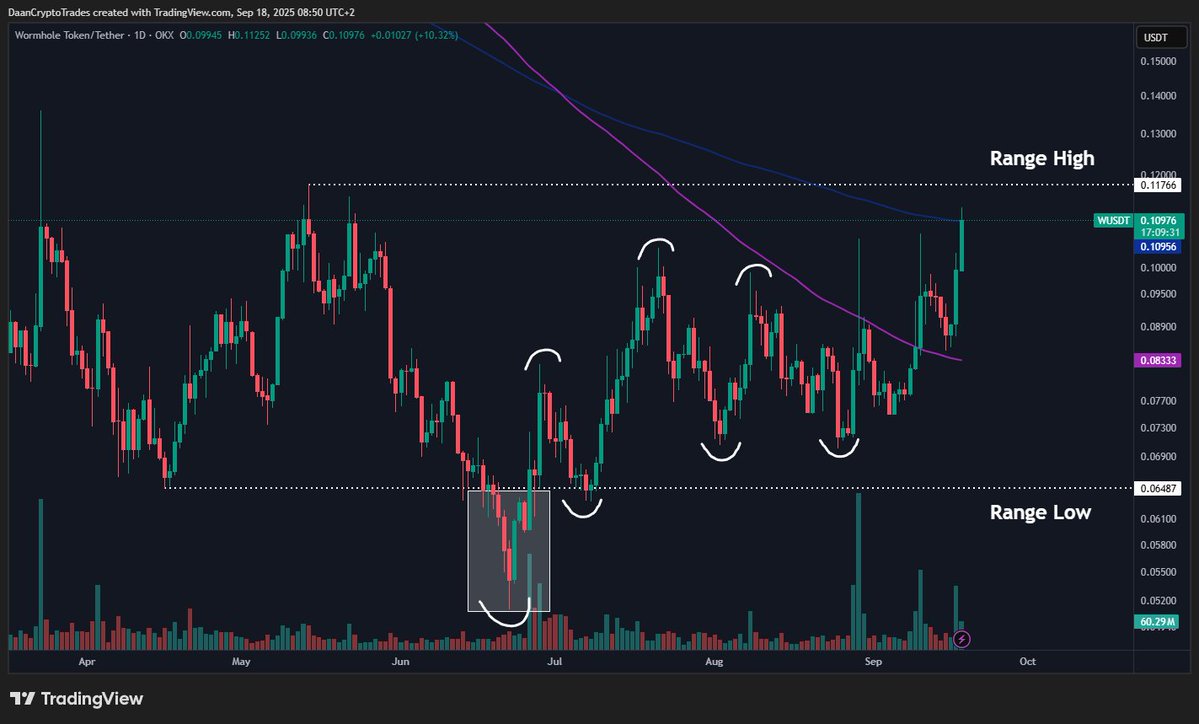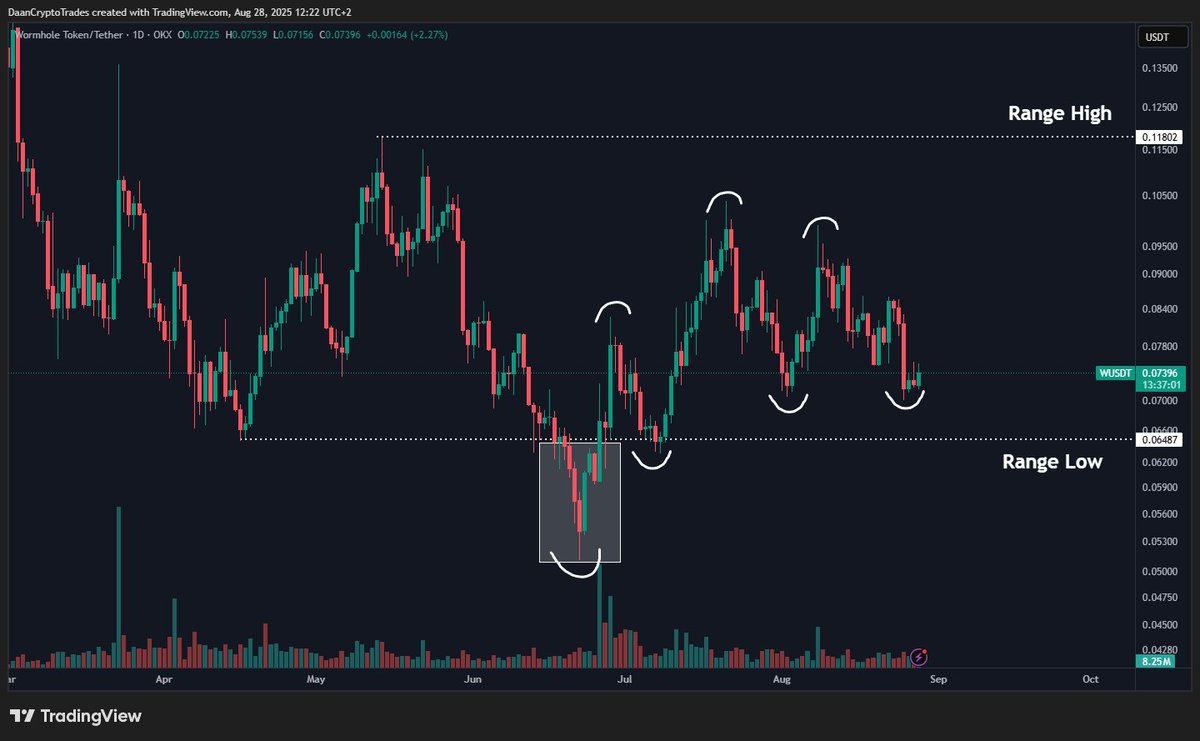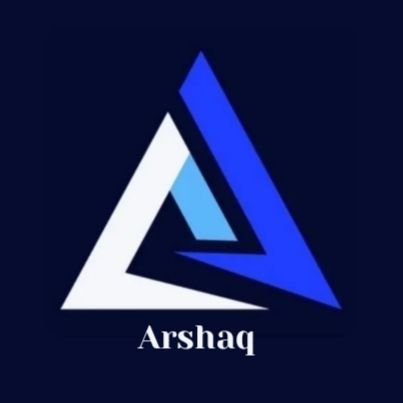Prezzo: Wormhole
in EURInformazioni su Wormhole
Disclaimer
OKX non fornisce raccomandazioni su investimenti o asset. Devi considerare attentamente se il trading o l'holding di asset digitali è adatto a te alla luce della tua condizione finanziaria. Consulta un professionista legale/fiscale/finanziario per domande sulla tua specifica situazione. Per ulteriori dettagli, fai riferimento ai nostri Termini di utilizzo e all'Avviso di rischio. Utilizzando il sito web di terze parti ("TPW"), accetti che qualsiasi utilizzo del TPW sarà soggetto alle condizioni del TPW e disciplinato dalle stesse. Se non espressamente dichiarato per iscritto, OKX e i suoi affiliati ("OKX") non sono associati in alcun modo al proprietario o all'operatore del TPW. Accetti che OKX non è responsabile di eventuali perdite, danni e qualsiasi altra conseguenza derivanti dall'utilizzo del TPW. Tieni presente che l'uso di un TPW potrebbe comportare una perdita o una diminuzione dei tuoi asset. Il prodotto potrebbe non essere disponibile in tutte le giurisdizioni.
Prestazioni prezzo Wormhole
Wormhole sui social
Guide

Crea un conto OKX gratuito.
Finanzia il tuo conto.
Scegli la criptovaluta.
Domande frequenti relative al prezzo di Wormhole
Esplora Wormhole
Wormhole funge da piattaforma di interoperabilità all'interno dell'ecosistema Web3 ed è progettata per connettere reti blockchain eterogenee. È nata come risposta alla crescente domanda di un protocollo di messaggistica di base che desse priorità a sicurezza, decentralizzazione e requisiti di fiducia minimi. Creando inizialmente un collegamento tra Ethereum e Solana, la piattaforma mirava a colmare il divario tra diversi ambienti blockchain, promuovendo una rete Internet Web3 più coerente.
La piattaforma è maturata in una vasta rete che migliora l'interoperabilità tra i sistemi blockchain, facilitando la crescita e la scalabilità delle applicazioni. Wormhole ha avuto un ruolo fondamentale nel supportare lo scambio fluido di dati, contribuendo all'infrastruttura che supporta la rete Internet aperta e sicura immaginata dalle iniziative Web3. Ora è la principale piattaforma di interoperabilità, utilizzata dagli sviluppatori di oltre 200 applicazioni (ad es. Uniswap, Circle, Lido) e facilita il movimento dei dati su più di 30 blockchain.
Prezzo e tokenomics di Wormhole
L'introduzione del token nativo di Wormhole, W, è fondamentale per il funzionamento dell'ecosistema, in quanto favorisce la governance, incoraggia la partecipazione e protegge il futuro della piattaforma. La tokenomics di W è stata progettata in modo strategico per soddisfare sia le esigenze di rete immediate sia l'espansione a lungo termine della piattaforma.
Il limite di fornitura totale di W è di 10 miliardi di token, con un valore iniziale di 1,8 miliardi in circolazione sul mercato. In conformità agli standard ERC20 e SPL, i token W sono creati per l'interoperabilità, utilizzando lo standard di trasferimento di token nativi di Wormhole per garantire transazioni cross-chain fluide. Per rafforzare la stabilità della rete e promuovere l'impegno a lungo termine, l'82% dei token W è inizialmente bloccato e destinato a diventare gradualmente disponibile in un periodo di quattro anni. I token vengono stanziati con cura per supportare diversi aspetti dell'ecosistema:
- Nodi Guardian: 5,1%, fondamentale per la sicurezza della rete; partecipazione alla verifica dei messaggi.
- Community e lancio: 17%, dedicato al coinvolgimento e alla ricompensa della community, anche tramite airdrop.
- Contributor principali: 12%, destinato ai team addetti a sicurezza, ingegneria e sviluppo di prodotti.
- Ecosistema e incubazione:31%, con lo scopo di supportare la crescita strategica e i contributi all'ecosistema Wormhole più ampio.
- Partecipanti alla rete strategica: 11,6%, riservato ai partecipanti con un interesse a lungo termine nella rete.
- Tesoreria fondazione: 23,3%, destinato a ricerche future, sovvenzioni della community e costi operativi, gestiti dalla Wormhole Foundation.
Ciascuna categoria testimonia l'impegno di Wormhole a creare un approccio equilibrato e completo alla sua tokenomics, promuovendo una vasta distribuzione in linea con la propria vision di un'infrastruttura Web3 interconnessa.
Informazioni su fondatore e stakeholder
L'origine e la crescita di Wormhole possono essere attribuiti a un collettivo di team decentralizzati, ognuno con esperienza in vari ambiti essenziali per il successo della piattaforma. Tra i principali contributor di Wormhole ci sono Wormhole Foundation, Wormhole Labs e xLabs. Ruoli chiave vengono svolti anche da altri team specializzati, come Wormhole China e Superteam, nonché da tecnici dell'ingegneria ZK come Lurk.
A supporto dall'ecosistema di Wormhole vi è una rete eterogenea di stakeholder composta, tra l'altro, da nodi Guardian, contributor principali e partecipanti strategici alla rete. Queste entità collaborano per mantenere e promuovere i servizi di Wormhole, evidenziando la strategia collettiva della piattaforma per consentire la comunicazione cross-chain.
Governance e DAO di Wormhole
Wormhole sta passando a un modello di governance basato su token per concedere agli holder di token W autorità decisionale, con un focus sulla gestione della tesoreria e della community dopo la distribuzione dei token. Questa strategia mira a sfruttare il potenziale collettivo dei membri della community di Wormhole, consentendo loro di districarsi efficacemente tra le sfide dell'ecosistema multichain e di coglierne le opportunità.
La struttura di governance è destinata a evolversi, con la concessione alla DAO di maggiore controllo sulle decisioni operative, tra cui le connessioni blockchain, gli aggiornamenti degli smart contract e le modifiche delle commissioni. Uno sforzo collaborativo tra i contributor principali di Wormhole e la community delineerà una roadmap trasparente e inclusiva verso la completa decentralizzazione, garantendo l'allineamento con gli interessi della community.
Punti salienti di Wormhole
- Adozione diffusa: la piattaforma è utilizzata dagli sviluppatori di oltre 200 applicazioni, tra cui dApp importanti come uniswap, circle, lido, synthetix.
- Vasta portata: facilita il trasferimento di vari tipi di dati su più di 30 blockchain.
- Volume rimarchevole: elaborazione di più di 1 miliardo di messaggi multichain, che testimonia l'elevata utilità e fiducia della piattaforma all'interno della community blockchain.
- Approvazione di Uniswap Foundation: nel 2023 ha ricevuto il riconoscimento come unico protocollo cross-chain incondizionatamente approvato dal Bridge Assessment Committee di Uniswap Foundation.




